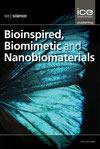Chitosan-based nanoparticles for controlled release of hydrophobic and hydrophilic drugs
IF 0.6
4区 工程技术
Q4 ENGINEERING, BIOMEDICAL
引用次数: 0
Abstract
Nanoparticles encapsulating different kinds of therapeutic drugs are promising drug delivery systems for controlling release and targeting tumor cells. Chitosan nanoparticles made by polyelectrolyte complexation were designed as drug carriers using doxorubicin (DOX)/5-fluorouracil (5-FU) as hydrophobic/hydrophilic model drugs. The sizes of nanoparticles were 235 ± 13 and 177 ± 7 nm with narrow distributions. The effects of the initial drug amount and pH of the medium on drug-controlled release properties were evaluated, the model-fitting results and release mechanisms were analyzed as well. For 5-FU-loaded chitosan nanoparticles, the controlled-release effect was superior to that of DOX, indicating that the polyelectrolyte complex nanoparticles were more suitable for hydrophilic drugs, particularly for negatively charged or electrically neutral drugs. Moreover, the release behaviors conformed with the first-order kinetic model, indicating that the nanoparticles were mainly released by diffusion during the drug release process; the system could also be fitted using the Higuchi model, showing that the entire drug release process was dominated by diffusion and supplemented by gradual dissolution. In all, the results suggested that chitosan nanoparticles made by polyelectrolyte complexation can be launched as a smart drug delivery system for cancer treatments.壳聚糖基纳米颗粒控制疏水和亲水药物的释放
纳米颗粒包裹不同类型的治疗药物是一种很有前途的药物递送系统,用于控制肿瘤细胞的释放和靶向肿瘤细胞。以多柔比星(DOX)/5-氟尿嘧啶(5-FU)为亲疏水模型药物,设计多电解质络合法制备的壳聚糖纳米颗粒作为药物载体。纳米颗粒尺寸分别为235±13 nm和177±7 nm,分布较窄。考察了初始给药量和培养液pH对药物控释性能的影响,并对模型拟合结果和释放机制进行了分析。对于负载5- fu的壳聚糖纳米颗粒,其控释效果优于DOX,表明多电解质复合物纳米颗粒更适合于亲水药物,特别是负电荷或电中性药物。释放行为符合一级动力学模型,表明在药物释放过程中,纳米颗粒主要以扩散释放;该系统也可以使用Higuchi模型进行拟合,表明整个药物释放过程以扩散为主,逐渐溶解为辅。总之,研究结果表明,由多电解质络合制成的壳聚糖纳米颗粒可以作为一种智能药物输送系统用于癌症治疗。
本文章由计算机程序翻译,如有差异,请以英文原文为准。
求助全文
约1分钟内获得全文
求助全文
来源期刊

Bioinspired Biomimetic and Nanobiomaterials
ENGINEERING, BIOMEDICAL-MATERIALS SCIENCE, BIOMATERIALS
CiteScore
2.20
自引率
0.00%
发文量
12
期刊介绍:
Bioinspired, biomimetic and nanobiomaterials are emerging as the most promising area of research within the area of biological materials science and engineering. The technological significance of this area is immense for applications as diverse as tissue engineering and drug delivery biosystems to biomimicked sensors and optical devices.
Bioinspired, Biomimetic and Nanobiomaterials provides a unique scholarly forum for discussion and reporting of structure sensitive functional properties of nature inspired materials.
 求助内容:
求助内容: 应助结果提醒方式:
应助结果提醒方式:


